Everyone knows that small and medium businesses need the right technology infrastructure to operate successfully. And as they grow, new technology is required to meet rising demands and accommodate team growth.
What often gets forgotten is that during this growth, network efficiency plays a pivotal role in streamlining business operations and maximizing the value of your tech stack.
After all, 86% of the businesses surveyed by Software AG indicated that their technology stack has substantially grown over the past few years, yet 42% of them invested in their technology without a plan for successful integration.
Businesses that don’t plan for integration can end up with a slower network that increases workloads and can have your technology working against you. It doesn’t have to be this way, though. By integrating IT systems, SMBs can boost network efficiency and stay in control of their tech stack.
What is IT Systems Integration?
IT systems integration combines separate computing systems, applications, third-party tools, and IT resources to perform as one cohesive unit. This integrated technology stack allows for reliable data exchange, efficient networking, and a holistic view of network activity.
Some of the resources that businesses can unify with IT systems integration include:
- Software applications
- Databases
- Servers
- Storage devices
- LAN, WAN, and cloud networks
- Older systems in the business
- APIs
- Internet of Things (IoT) devices
Without integrated systems, a growing business can have multiple departments with slow communication circuits and long wait times for network activity and monitoring. Inefficient analytics and data collection procedures can lead to decision-makers waiting a long time to receive information – or worse, making important growth decisions with incomplete data.
Benefits of IT Systems Integration
IT systems integration brings small and medium businesses a wide range of benefits; here are a few of the most impactful benefits your company can see.
Increased Efficiency
Integrating IT systems leads to efficiency increases through the reduction of redundant tasks and automated workflows.
Redundant tasks require employees to enter data into disconnected systems or process information identically in different locations. Centralized data communicated promptly between applications significantly reduces redundant tasks, ensuring team members have access to an accurate data set across the entire business.
Additionally, routine tasks can be automated across departments and even after work hours to improve efficiency. Invoicing, billing, data backups, and software patching are just a few examples of easily automated processes that help teams work more efficiently with integrated IT infrastructure. Once the relevant data and systems have been successfully integrated, even reporting and analytics can be collected, processed, and delivered automatically.
Enhanced Scalability
SMBs plan for growth, and integrating IT systems helps businesses experience fewer growing pains as they introduce new infrastructure and resources to the network.
For example, new services, such as cloud computing and storage, can seamlessly access company data and resources needed to get work done. When it’s time for older applications to be updated, the business can easily swap in the new service while keeping any needed archival data integrated and accessible.
A business can also implement business-to-business (B2B) integrations that allow network resources to connect to outside entities for financial transactions, inventory ordering, payment processing, and more.
Time and Cost Savings
Integration saves businesses time by reducing redundant tasks and improving collaboration between team members. Project management and communication tools can be part of a business’ integrated infrastructure, which helps teams allocate workloads and stay coordinated as projects move toward completion.
Businesses reduce costs by enhancing efficiency and saving time. A unified infrastructure needs fewer servers, software licenses, and maintenance efforts, resulting in decreased technology acquisition and maintenance expenses.

Key Processes in IT Systems Integration
Systems integration requires middleware, APIs, and integration-platform-as-a-service (iPaaS) tools that unite a business’s applications, networking infrastructure, and data.
Your IT consultant can help you determine which tools best suit your environment and implement the following critical processes for your integration projects.
Application Integration
Application integration allows multiple third-party apps to communicate with one another, transfer data, and perform synchronized actions in real time.
It brings together applications that generate and use data sets or applications that rely on each other for operations. For example, a customer relationship manager (CRM) tool can be integrated with collaborative software used by teams to consolidate and deliver relevant information on leads.
Application integration can be achieved with:
- APIs
- Webhooks
- Enterprise service buses (ESBs)
- Message-Oriented Middleware (MOM)
- iPaaS
Network Infrastructure Integration
IT systems integration for the network sees devices, routers, servers, and other networking infrastructure unified into a cohesive working unit. This interconnectivity speeds up networking processes and seamlessly connects virtual and cloud services to on-premises infrastructure.
Administrators can monitor the network more closely by orchestrating security services and alerts that provide actionable notifications and automatically analyze network traffic data and information.
A few examples of network infrastructure integration tools include:
- Network Management Systems (NMS)
- Network Configuration Management (NCM)
- Software-Defined Networking (SDN) Controllers
- Cloud Integration Tools
Data Integration
Businesses integrate data to combine various data sources into one centralized store of data. This process involves acquiring data from points of collection, validating it, changing it to a standard format, and then providing access to the data wherever it is needed.
This process reduces the potential for entry errors and desynchronization while allowing relevant teams to access data faster and use analytics to make informed decisions. It is often essential for businesses that need to collect and manipulate large amounts of data for operations and business decisions.
To effectively achieve data integration, businesses can use tools such as:
- Enterprise service buses (ESBs)
- Data virtualization tools
- API management platforms
- Master data management (MDM) tools
- Data iPaaS
System Integration Services for Modern Networks
Modern networks demand specialized tools and frameworks for successful systems and data integration. Depending on your business’ data needs, technology environment, and integration goals, your company could require a combination of:
- Legacy system integration: The process of integrating outdated or obsolete applications or data archives into a modernized IT infrastructure.
- Third-party system integration: Creating streamlined connections between business tools or network resources to third-party software or services, such as payment processors, social media, or training platforms.
- Business-to-business integration: Automating transactions and data exchanges between two companies that work together. These integrations can be helpful for payment orders, supply chains, and electronic document transfers.
The first step is to know the systems and data your business needs to integrate. There are numerous ways to integrate applications, IT systems, and data. Some common examples small and medium companies use include:
- Point-to-point Integration: Creating direct connections between every system or application that needs to communicate. While this is a simple integration method, it can become cumbersome as a business’ IT environment grows in complexity.
- Hub-and-spoke model: This method uses centralized middleware or hubs to manage system communications. It allows for more complex system integrations but has a single point of failure that can pose a risk to business operations.
- Star integration involves connecting every system within an environment that needs to communicate with each other. This method works well for small technology environments but can have trouble scaling as a business’s integration needs grow.
Deciding the right approach for your business’ IT systems can be overwhelming. Working with an IT consultant to identify your business’ integration needs and the tools needed to create a custom-tailored environment suited to your business.

Optimize Your Network with IT Systems Integration Support
With how complicated IT systems integration can become for SMBs, it’s no wonder many businesses increase their tech stack without a plan. However, prioritizing systems and data integration can make your network more efficient and allow for quick scaling as you grow.
The best part is that you don’t have to plan and execute any integration strategies on your own. The Robinett Consulting team has helped SMBs plan and execute integration strategies, and we want to bring our services to you.
Contact one of our engineers to see how we can help your business save time, cut costs, and optimize your network and data performance.




